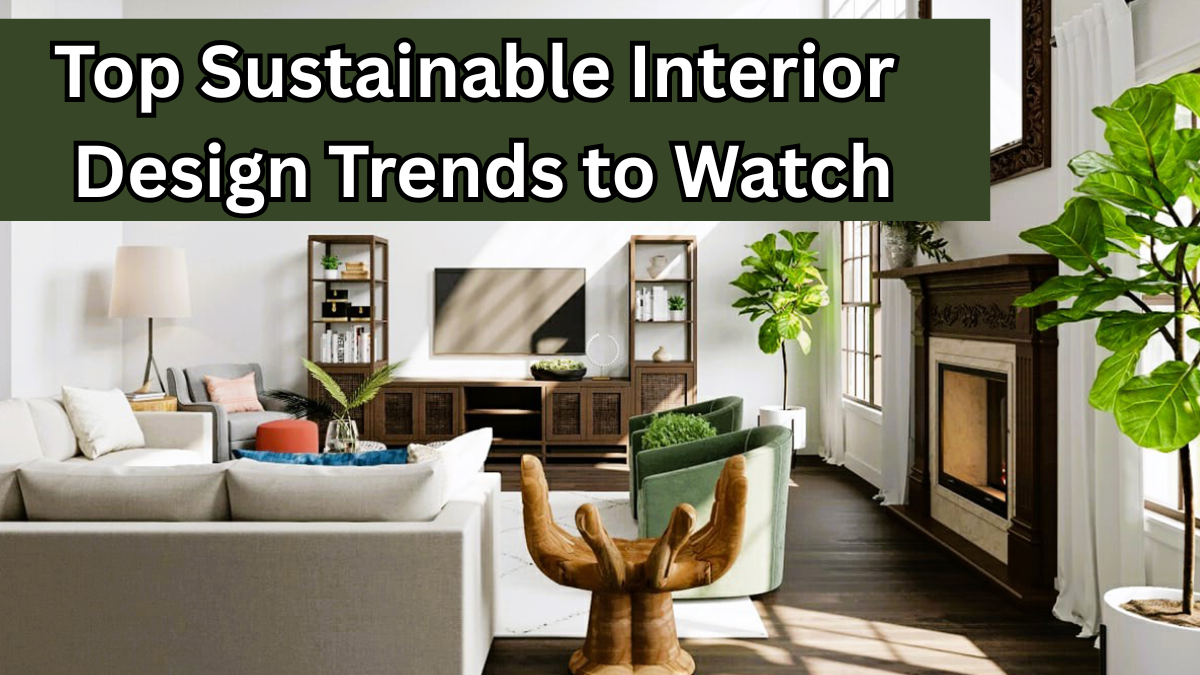As we step into 2025, the world of interiors is evolving, and one thing is clear — sustainable interior design is no longer a trend; it’s becoming a way of life. People are rethinking their spaces to make them not only beautiful but also eco-friendly and future-proof. This year, eco-friendly trends 2025 are bringing innovation, style, and responsibility into homes and workplaces.
Let’s explore the top sustainable design ideas that will dominate 2025.

Why Sustainable Interior Design Matters in 2025
With growing awareness of climate change, individuals and designers are prioritizing green living. This shift isn’t just about aesthetics; it’s about creating healthier, more resilient living spaces.
Some key reasons why sustainability is trending:
-
Rising environmental consciousness
-
Demand for healthier indoor environments
-
Cost savings through energy efficiency
-
Desire for timeless, durable designs
Upcycled & Reclaimed Materials Take Center Stage
Gone are the days of discarding the old. In 2025, sustainable interior design encourages giving materials a second life. From reclaimed wood flooring to upcycled furniture, homeowners are embracing pieces that tell a story.
Examples:
-
Salvaged wooden beams for shelving
-
Vintage furniture reimagined with fresh finishes
-
Repurposed tiles for accent walls
Biophilic Designs for a Natural Touch
Nature-inspired interiors are not just visually appealing; they improve mental well-being too. Expect eco-friendly trends 2025 to feature more biophilic designs, blending the indoors with the outdoors.
Key elements include:
-
Indoor gardens & green walls
-
Natural light optimization
-
Stone, clay, and bamboo accents
Energy-Efficient Homes with Smart Design
Smart doesn’t just mean tech—it means efficiency. Sustainable interior design in 2025 focuses on homes that consume less energy without compromising on comfort.
Features to look out for:
-
Solar-integrated lighting
-
Energy-efficient appliances
-
Smart thermostats and lighting systems
Non-Toxic & Eco-Friendly Finishes
Health-conscious design is big in 2025. People are opting for low-VOC (volatile organic compound) paints, natural dyes, and eco-friendly upholstery. These choices ensure a cleaner and safer home environment.
Minimalism with Purpose
Minimalism is evolving into “mindful living.” It’s no longer about empty spaces but carefully curated ones that reduce waste and promote functionality.
Quick Look: Key Trends at a Glance
| Trend | Why It’s Popular |
|---|---|
| Upcycled Materials | Reduces waste & adds character |
| Biophilic Design | Enhances well-being |
| Energy Efficiency | Saves money & the planet |
| Non-Toxic Finishes | Creates a healthier home |
| Purposeful Minimalism | Promotes sustainable living |
How to Bring These Trends into Your Space
-
Start small: Add plants or switch to energy-efficient lighting.
-
Invest in quality: Durable, timeless furniture reduces replacements.
-
DIY upcycling: Reuse old furniture instead of discarding it.
-
Choose green materials: Opt for bamboo, jute, or reclaimed wood.
Final Thoughts
In 2025, eco-friendly trends aren’t just for design enthusiasts—they’re for anyone who wants to live better while helping the planet. With these sustainable interior design ideas, you can create spaces that are stylish, functional, and environmentally responsible.
FAQs
1. What is sustainable interior design?
It’s a design approach that minimizes environmental impact by using eco-friendly materials, energy-efficient solutions, and long-lasting products.
2. How can I make my home more sustainable in 2025?
Start with small changes like using LED lighting, adding indoor plants, and switching to non-toxic paints or upcycled furniture.
3. Are sustainable materials expensive?
Not necessarily. While some eco-friendly products may cost more upfront, they often last longer and reduce maintenance costs.
4. What are the most popular eco-friendly trends 2025?
Biophilic design, upcycled materials, energy-efficient solutions, and non-toxic finishes are leading the way.
Click here to learn more
